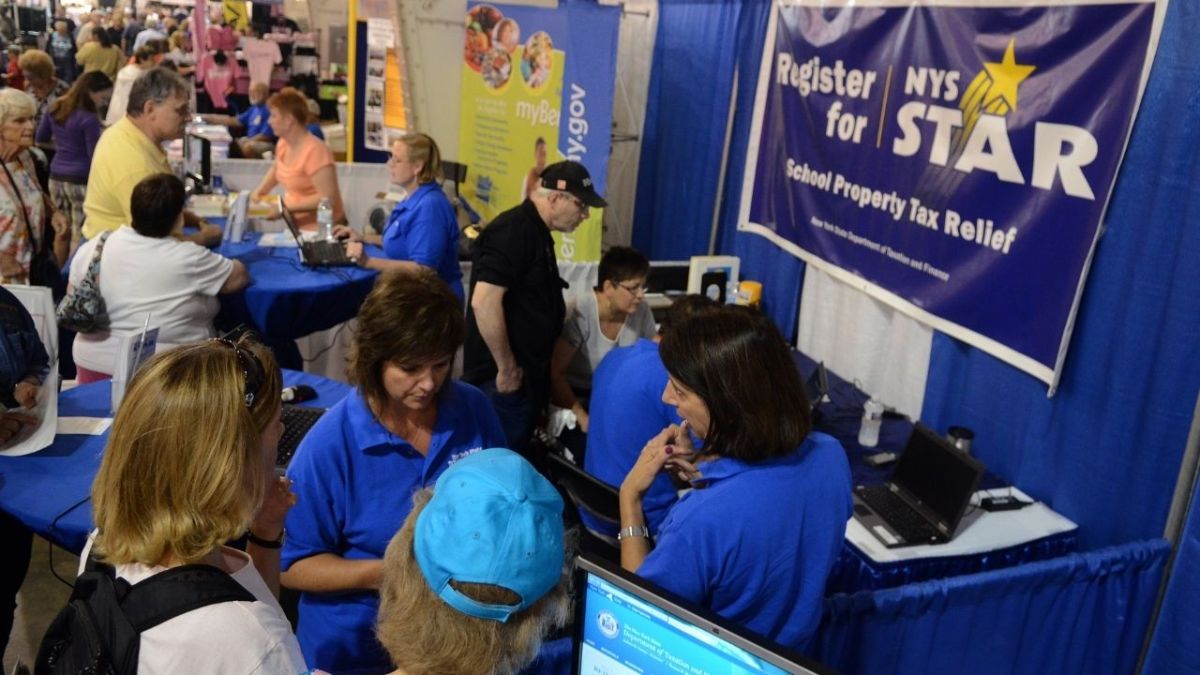In the face of unrelenting inflation and skyrocketing living expenses, New York State has rolled out a new initiative under the School Tax Relief (STAR) program, offering up to \$1,500 in direct payments to qualifying families. The move, unveiled by Governor Kathy Hochul, is designed to cushion households from the rising costs of groceries, fuel, utilities, and housing.
The STAR program, which already assists homeowners by reducing school property taxes, will now provide a financial boost to over two million residents statewide. Hochul has described the expansion as a way to help both working families and retirees who are living on fixed incomes navigate these turbulent times.
“Summer marks the beginning of the STAR tax relief season for millions of New Yorkers,” Governor Hochul declared. “This effort is about making sure families don’t have to choose between paying the bills and putting food on the table.”
Why the STAR Program Matters Now
Inflation has left its mark on every corner of daily life in New York. Gas prices remain elevated, grocery bills have surged, and utility costs have weighed heavily on households. For many families, the cost of essentials now outpaces wage growth.
This is where the STAR program becomes critical. By delivering direct financial aid, the initiative is not only helping families in the short term but also aiming to stabilize household budgets against long-term economic strain.
Payment Breakdown Under the STAR Program
The new STAR payment plan has been designed with tiered support to ensure fairness and maximize relief for those who need it most.
- Families earning under \$500,000 annually will be eligible for benefits, though most payments will range between \$350 and \$600.
- Seniors qualifying for the Enhanced STAR program—who often face higher medical costs and rely on fixed incomes—will receive between \$700 and \$1,500.
This structured approach ensures that lower-income households and senior citizens receive the greatest assistance.
Payment Breakdown Table
| Income Range | Payment Amount | Notes |
|---|---|---|
| Less than \$500,000 | \$350 – \$600 | For most homeowners |
| Seniors (Enhanced STAR program) | \$700 – \$1,500 | Higher benefit recognizing senior challenges |
Eligibility Requirements Explained
Eligibility for the STAR program rests primarily on income levels and residency requirements. Families earning below \$500,000 annually are eligible to apply, while seniors meeting Enhanced STAR criteria receive larger benefits.
The program is designed to cover a wide spectrum of households—from young working families to retirees. Unlike many relief initiatives that require extensive applications, STAR operates largely through tax filings, streamlining the process for families already enrolled in property tax exemptions.
How Payments Will Be Distributed
One of the key strengths of the STAR program is its automatic distribution system, designed to minimize red tape.
- Homeowners already enrolled in STAR property tax exemptions will receive payments automatically, without having to reapply.
- For other eligible participants, relief will be delivered either through direct deposit or a mailed check.
This ensures that families can access the aid quickly, without delays often associated with government assistance programs.
Geographic Reach: From Cities to Suburbs
The STAR program’s reach extends across every corner of New York State. Major cities such as New York City, Buffalo, Rochester, and Syracuse will see a large share of the payments, given their dense populations and higher number of eligible residents.
But the initiative also extends into suburban and rural areas, ensuring that no household is left behind. This balanced distribution reflects the state’s understanding that financial hardship is not limited to urban centers—it affects small towns and rural communities as well.
Why Seniors Are a Key Focus
A major feature of the STAR program is its emphasis on supporting senior citizens. With many older residents relying solely on pensions or Social Security, inflation hits them especially hard. Rising healthcare costs, prescription expenses, and utilities disproportionately strain fixed incomes.
The Enhanced STAR payments of up to \$1,500 serve as recognition of these unique challenges. For seniors, this assistance could mean affording necessary medication, paying winter heating bills, or simply maintaining a stable standard of living.
Broader Economic Goals
While the STAR program provides immediate financial relief, it is also part of a long-term economic stabilization strategy. By directly supporting household budgets, the state hopes to:
- Boost consumer confidence by allowing families to spend on essential goods.
- Prevent a deeper economic slowdown by encouraging local spending.
- Provide a safety net that helps residents stay afloat despite rising costs.
Governor Hochul has emphasized that this initiative is not a one-off solution but part of a broader vision for economic resilience in New York State.
Immediate Impact: Families Feeling the Relief
For many households, the relief payments will arrive just in time. Families preparing for the back-to-school season face significant expenses, from school supplies to rising transportation costs. The STAR payments can help offset these burdens, providing breathing room in tight budgets.
Economists note that targeted programs like STAR are especially effective in the short term because they inject money directly into households rather than waiting for broader market changes to trickle down
Balancing Short-Term Relief with Long-Term Policy
The STAR program highlights New York’s dual approach: provide immediate aid while also working on longer-term strategies. Alongside tax relief, the state is investing in affordable housing initiatives, infrastructure improvements, and workforce development programs to strengthen its economic base.
By combining direct relief with structural reforms, New York hopes to shield its residents from current inflationary pressures while preparing them for a more stable financial future.
Criticism and Debate
While many welcome the initiative, there has been debate around eligibility limits. Some critics argue that the \$500,000 income threshold is too high and that resources should be concentrated solely on low- and middle-income households.
Others have raised concerns about sustainability, questioning whether the state can continue funding such relief efforts in future years if inflation persists.
However, supporters point out that the STAR program is funded through existing property tax structures and that prioritizing households across income brackets helps maintain a broad base of political and public support.
Voices from the Community
Reactions from New Yorkers have been mixed but generally positive.
- Working parents have praised the relief as timely, especially with child care and education costs soaring.
- Senior citizens welcome the enhanced payments, saying they provide reassurance in covering medical bills and home maintenance.
- Small-town residents highlight that rural communities, often overlooked in policy discussions, will also benefit from STAR’s statewide coverage.
The Bigger Picture: Inflation Nationwide
New York’s STAR initiative mirrors broader efforts across the United States, where many states have introduced tax rebates, relief checks, or subsidies to counteract inflation. Programs like California’s Middle Class Tax Refund and Colorado’s property tax relief demonstrate that states are stepping in to supplement federal measures.
By implementing its own targeted relief, New York signals its intent to lead in state-level economic policy and set an example for others grappling with similar challenges.
What Comes Next
As the STAR payments begin rolling out, state officials will monitor their impact on household stability and local economies. Data from these payments will help shape future policy decisions, ensuring that relief efforts remain aligned with residents’ evolving needs.
Governor Hochul has committed to transparency and accountability, promising updates on program effectiveness and exploring potential expansions or adjustments based on community feedback.
5 FAQs
Q1. What is the STAR program in New York?
The STAR (School Tax Relief) program helps reduce property taxes for homeowners and now provides direct relief payments up to \$1,500 to families and seniors.
Q2. Who qualifies for the \$1,500 STAR payment?
Families earning under \$500,000 annually qualify, with seniors enrolled in Enhanced STAR eligible for larger benefits ranging from \$700 to \$1,500.
Q3. How will payments be distributed?
Payments will be issued automatically to those enrolled in property tax exemptions, while others will receive direct deposits or mailed checks.
Q4. Which cities are included in the STAR program?
The program covers the entire state, including New York City, Buffalo, Rochester, Syracuse, and smaller towns across New York.
Q5. When will families receive the STAR payments?
Payments begin rolling out during the summer relief season of 2025, aligning with property tax relief schedules.












